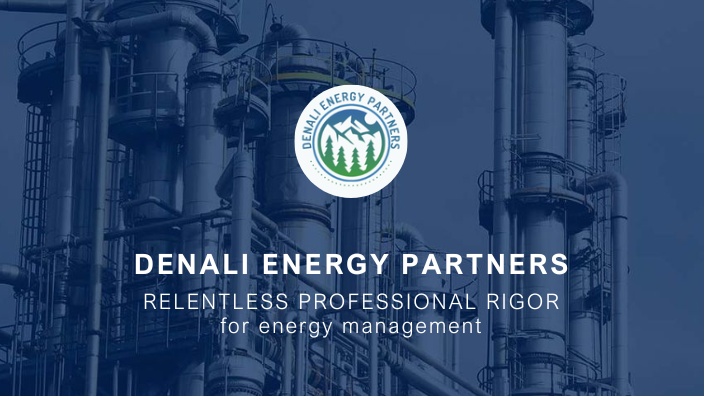Why Industrial Parks Should Generate Their Own Energy
Denali-ep
| 11 de octubre de 2024
Why Industrial Parks Should Generate Their Own Energy
In today's world, where efficiency and sustainability are critical to economic development, industrial parks play a key role. These clusters of businesses, operating in specific geographic areas, have a significant energy demand. Generating their own energy emerges as a viable and beneficial solution for these industrial parks. In this article, we will explore why industrial parks should consider generating their own energy.
Definition of Industrial Parks
What Are Industrial Parks?
Industrial parks are specially designed areas that host a large concentration of industries. These parks provide shared infrastructure, services, and resources for the companies located within, facilitating their operation and growth.
Economic Importance
Industrial parks are major economic drivers. They generate jobs, foster regional development, and attract both national and international investments. The efficiency of their operations is crucial to maintaining competitiveness.
Energy in Industrial Parks
Energy Demand
Industrial parks have a high energy demand due to the concentration of productive activities. Factories, plants, and other facilities require a constant and reliable energy supply to operate efficiently.
Costs and Dependency
Energy costs can be a significant burden for companies in an industrial park. Additionally, reliance on external energy sources can make these costs volatile and difficult to predict.
Benefits of Generating Energy On-Site
Cost Reduction
Generating energy on-site allows industrial parks to reduce their operating costs. By producing their own electricity, they can avoid high market prices and gain better control over their expenses.
Energy Independence
Having their own energy source provides energy independence, reducing vulnerability to market fluctuations and ensuring a consistent supply.
Environmental Sustainability
Generating energy from renewable sources contributes to environmental sustainability. It reduces the carbon footprint of industries and helps meet global environmental goals.

Types of Energy Generation
Solar Energy
How Solar Panels Work
Solar panels convert sunlight into electricity using photovoltaic cells. This technology is highly efficient and increasingly accessible for industrial installations.
Benefits and Limitations
Solar energy is clean and renewable. However, its reliance on sunlight means that its efficiency can vary depending on climate and geographic location.
Wind Energy
Wind Turbine Technology
Wind turbines use wind to generate electricity. This technology is ideal for areas with strong wind currents.
Advantages and Disadvantages
Wind energy is a clean, renewable source, but its installation can be costly and requires careful analysis of wind conditions.
Hydroelectric Power
Small Hydroelectric Plants
Small hydroelectric plants can be installed on rivers and streams to generate continuous electricity.
Environmental Impact and Benefits
While they have some environmental impact, these plants can be designed to minimize negative effects and provide a constant source of renewable energy.
Success Stories in On-Site Energy Generation
Examples in Latin America
Countries like Chile and Mexico have successfully implemented on-site energy generation projects in industrial parks, reducing costs and improving sustainability.
Examples in Europe
Germany and Spain lead in Europe with innovative energy generation initiatives in industrial parks, leveraging renewable sources such as solar and wind.
Challenges in Implementation
Initial Costs
The initial investment for generating on-site energy can be high. However, the long-term benefits often outweigh these costs.
Regulations and Policies
Government regulations can be an obstacle. It’s crucial to have a clear and supportive regulatory framework for implementing these technologies.
Solutions and Government Support
Subsidies and Financing
Many governments offer subsidies and financing options to encourage the adoption of renewable energy in industrial parks.
Technological Support Programs
Technological support programs help industries adopt new technologies, reducing costs and improving efficiency.
Long-Term Economic Impact
Operational Cost Savings
Generating on-site energy reduces operational costs over the long term, improving the profitability of companies in industrial parks.
Market Competitiveness
Energy independence and sustainability enhance companies’ competitiveness, attracting environmentally conscious investors and customers.
Environmental and Social Impact
Reduction of Carbon Emissions
Adopting renewable energy reduces carbon emissions, contributing to the fight against climate change.
Creation of Local Jobs
Implementing on-site energy generation technologies can create local jobs, boosting regional economic development.
Future Trends in Energy Generation
Technological Innovations
Technological innovations continue to improve the efficiency and reduce the costs of renewable energy, making it more viable for adoption in industrial parks.
Integration of Renewable Energies
The integration of various renewable energy sources, such as solar, wind, and hydroelectric, ensures a constant and sustainable supply.
Conclusion
Generating energy on-site in industrial parks is not only a viable strategy but also a necessary one to reduce costs, ensure a steady energy supply, and promote sustainability. The economic, environmental, and social benefits are significant, making this a smart long-term investment.
Why should industrial parks generate their own energy?
Generating energy on-site can help industrial parks reduce operational costs, achieve energy independence, and contribute to environmental sustainability. By producing their own energy, they can avoid fluctuating market prices and rely less on external energy sources.
What types of energy can industrial parks generate?
Industrial parks can generate energy using various renewable sources like solar, wind, and hydroelectric power. Solar panels and wind turbines are popular options, while small hydroelectric plants can be installed near rivers or streams for continuous energy generation.
What are the financial benefits of on-site energy generation?
On-site energy generation can lead to significant cost savings by lowering energy expenses over time. While the initial investment may be high, the long-term savings from reduced reliance on external power and lower energy costs make it a financially viable solution.
How does generating energy on-site contribute to sustainability?
By using renewable energy sources, industrial parks can reduce their carbon footprint and contribute to global environmental goals. Generating their own clean energy helps decrease greenhouse gas emissions and promotes a more sustainable operation.
What challenges do industrial parks face when implementing on-site energy generation?
The main challenges include the high initial costs of setting up renewable energy systems and navigating complex government regulations. However, many governments offer subsidies and support programs to help industrial parks overcome these hurdles and adopt sustainable energy solutions.




